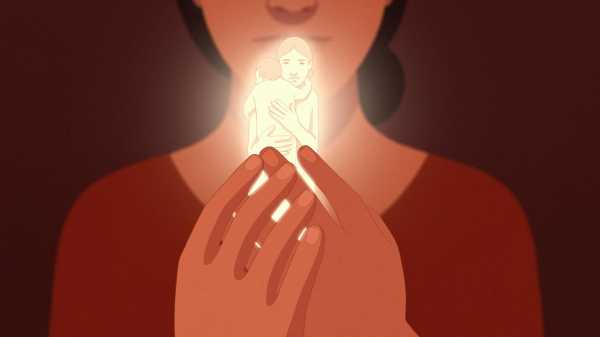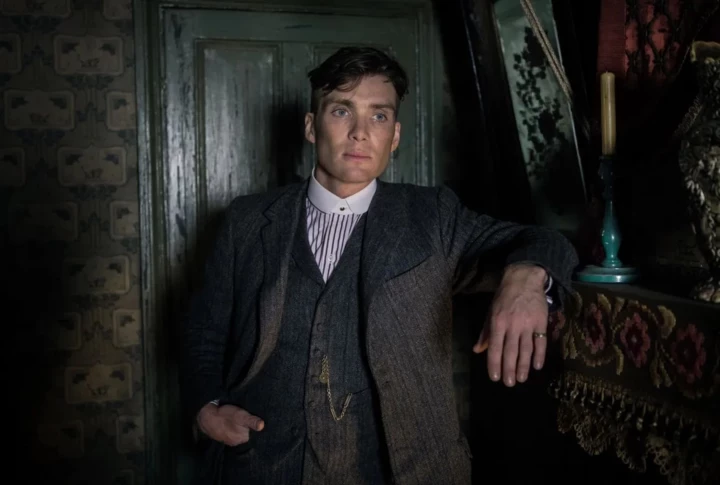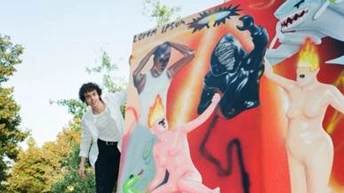
Save this storySave this storySave this storySave this story
Several months after the writer Lucy Jones gave birth to her third child, she purchased a compound microscope, swabbed her underarm, and set out to grow her own bacteria. This might seem like a weird thing to do, but motherhood makes you weird. Since having children, Jones had observed a series of changes in herself: She noticed that her smell was different, and then learned that a mother’s pheromones may change, to better attract the baby. She found that she was more vigilant around her children; and her body ached when they were separated. She wanted to know more. “What was happening in my body to augment the bond between us?” she wondered. “What new living creatures were now part of me?” When the colony from her swab appeared—white and green—she wrote that “the growths looked like blooms of jellyfish” and that “many were perfectly spherical and three-dimensional.” The bacteria she found were harmless, but they added to her curiosity. In motherhood, her new body had become “a site of fascination,” she later wrote. “I began to enjoy investigating the changes I was undergoing.”
Jones is a journalist and science writer who lives in the wooded county of Hampshire, southwest of London. She grew up on the grounds of Eton College, the prestigious boys’ boarding school, where her father is a teacher and chaplain. She started drinking at fourteen and was later expelled from school for releasing a rat at an assembly. In her late twenties, working at magazines in London, she got sober in part by embracing nature: the woods, rivers, and marshes. Her previous book, “Losing Eden: Our Fundamental Need for the Natural World—and Its Ability to Heal Body and Soul,” made a connection between mental health and time spent in nature.
In late 2015, Jones became pregnant with her first child. She was overjoyed, but found her new state discombobulating. When she gave birth, she learned that her expectations of a “natural” labor—whale sounds, fairy lights—were nothing like what happened. Instead, she was in labor for forty-three hours, and ended up with a second-degree tear. In her third birth, she hemorrhaged and sustained an anal-sphincter injury. “A sense that I had been fundamentally misinformed about the female body and maternal experience set in fast,” she later wrote. She realized that she had never seen a painting of a person giving birth, or heard a song about pregnancy, or read a book about the loss of self in early motherhood. Why didn’t she have any idea of what being a mother entailed?
When her firstborn was a few months old, Jones was diagnosed as having postpartum depression. The baby was colicky and not sleeping much, and Jones had little time to use the bathroom or to feed herself. She was severely sleep-deprived when she read an article in the New York Times in which the reproductive psychiatrist Alexandra Sacks described the process of becoming a mother using a term Jones hadn’t heard before: matrescence. “Research is focused on how the baby turns out,” Sacks wrote. “But a woman’s story, in addition to how her psychology impacts her parenting, is important to examine, too.” Jones felt her shoulders drop in relief. “I was obsessed,” she told me.
Jones’s process of dismantling, and rebuilding, her conception of motherhood forms the basis of her new book, “Matrescence: On Pregnancy, Childbirth, and Motherhood,” which was released in the U.S. in May. Wide-ranging in scope and hugely ambitious, the book is part memoir, part explanation of the science and sociology of motherhood. Jones argues that, outside of adolescence, there is no transformation as dramatic in a human’s life. Changes in the maternal brain, for example, “alter the neural basis of the self,” according to one study she cites. And, yet, modern Western society has no rituals to celebrate becoming a mother—the baby shower is mostly for the baby—and little in the way of practical support. “Everyone knows adolescents are uncomfortable and awkward because they are going through extreme mental and bodily changes,” Jones writes. “But, when they have a baby, women are expected to transition with ease.”
The book has become a sensation in Britain, passed around in baby groups and text threads for new mothers. In The Spectator, Joanna Pocock wrote that “Jones seems to come as close as it’s possible to describing this indescribable moment in a woman’s life.” Jones has been inundated with stories from readers. “I don’t think, since my first daughter was born in 2012, that I have ever felt so seen/ heard,” one woman wrote to her. “I have devoured it whilst on the loo, on school runs, on run runs, in bite-sized bits.” Jones has given public talks, has contributed to a government inquiry on birth trauma, and will speak at an upcoming matrescence festival. The motherhood-studies scholar Andrea O’Reilly told me, “She’s doing something that hadn’t been done and needed to be done.”
Earlier this spring, I visited Jones at the home she shares with her husband and three children, aged seven, five, and three. Jones is artsy and outdoorsy, with brown hair that she wears in a messy twist and the vibe of a camp counsellor who has seen it all. Inside, it was cozy and cluttered, and Jones showed me a long back garden with apple trees and a trampoline. The kids were out, but evidence of their play was everywhere: volcano stickers, crayon markings. Over tea, Jones told me that what happened to her after giving birth felt like “the biggest drama of my life.” In the book, she writes, “I thought early motherhood would be gentle, beatific, pacific, tranquil: bathed in a soft light. But actually it was hardcore, edgy, gnarly. It wasn’t pale pink; it was brown of shit and red of blood. And it was the most political experience of my life, rife with conflict, domination, drama, struggle and power.”
One of the more disturbing passages in “Matresence” depicts a truly natural birth—that is, the birth of baby black lace-weaver spiders. After hatching her spiderlings, the mother “feeds the brood regurgitated fluid and then her own body.” (The section is titled “Matriphagy”—the consumption of a mother by her offspring.) Other animals that make their way into the book include female vampire bats, who will raise orphaned baby bats; the Portuguese man-of-war, which exists as a colony, not as individuals; and emerald cockroach wasps, who lay eggs on their victims. We learn that caterpillars, after dissolving into a goo, carry memories into butterfly-hood, and that snakes become very angry before shedding their skin.
These vignettes offer a gritty counter to the popular ideal of “natural birth.” Jones’s pregnancies, like those of her friends, were characterized by hypnobirthing tracks authorized by the National Health Service, with mantras like “My body was the perfect body to birth my baby.” Jones follows the vogue for “natural” birth in the U.K. back to its roots, a nineteen-thirties-era English obstetrician named Grantly Dick-Read, who believed that “healthy childbirth was never intended by the natural law to be painful.” (Mothers everywhere reply, “Sorry, what?”) The National Childbirth Trust, a British charity that offers popular antenatal classes, was founded to further Dick-Read’s teachings. In “Matrescence,” Jones writes, “We are so disconnected from the rest of the natural world that we don’t know what ‘nature’ is: bodies failing, cuckoos pushing eggs out of nests, a weirdly small human pelvis and a big infant head, illness and disease, shit and blood, ticks and cockroaches.” She emphasizes that childbirth “in the ‘natural world’ often ends in infant or maternal death. ‘Natural’ childbirth can end in clitoral tears, sepsis, rectoceles, fistulas, and psychosis.” Gnarly.
Jones traces the way the human animal evolves during and after pregnancy, using herself as a lens. After childbirth, she entered into a hypervigilant state, in which she was constantly scanning the environment for threats that could harm her baby. “The road seemed louder and busier than it did before she was born,” she writes. “My arms were taut around her, my claws ready to gouge an eye.” In public, it was difficult for Jones to follow conversations when the baby was around, her attention diverted. These changes, and others, made sense, she writes, “when I discovered that my brain had changed beyond recognition.”
Research in this area is relatively new. “We knew virtually nothing about the maternal brain until the 2010s,” Jones writes. But some scientists have shown that the impact of motherhood on the brain is comparable with the alterations the brain undergoes during puberty. She describes a study in the science journal Nature Neuroscience that found that mothers’ brains showed areas of shrunken gray matter and decreased cortical thickness, which a scientist tells her could show a “fine-tuning of connections,” a streamlining, in order to adapt to the task of caring for a baby. Greater brain-volume losses, one lab found, predicted stronger mother-infant bonding. There was also evidence that the reward circuit of the brain had been updated to encourage responsiveness to the baby. Jones writes of using her scant leisure time to look at photos of her daughter, and answering her cries in the night, even when “dog-tired.” “My brain was now literally a new brain,” Jones notes.
Big changes, one study found, happened in the default-mode network, an area related to, as Jones writes, “the perception of the self.” One’s identity seems to expand to encompass the baby; this often manifests in behaviors that include nesting, responding to an infant’s cry, and bonding with the baby. It reminded me of the time a friend asked how I was doing after the birth of my own child, and I answered that the baby was doing well. Her follow-up question, which confused me, was, “No, but how are you?”
Jones writes movingly of the dualism of her transformed state. “I had thought that my disrupted sense of self, my notion that I’d become a new hybrid creature, must be in some way fanciful,” she notes. In fact, “it was the idea that I was ultimately an independent individual that was fanciful.” In a chapter titled “Zombie Cells,” she describes how, during pregnancy, cells are exchanged between the mother and fetus via the placenta, in a process called microchimerism. Years after birth, fetal cells can linger in the mother’s body, migrating to her liver, heart, lungs and brain. They sometimes show up at sites of damage or disease, and have been found in C-section scars and breast tumors. The mother’s cells remain in the child, too, and sometimes a younger sibling carries the cells of an older child. We are all chimeras.
One afternoon in March, I went for a walk with Jones through a quiet stretch of forest near her home. She had on the attire of someone accustomed to hiking the wet British countryside: an ankle-length waterproof coat, boots, a backpack. She had brought along a jeweller’s loupe and a flashlight, and was searching for myxomycetes, commonly known as slime molds—fungus-like creatures that live on the undersides of logs and leaves. To the naked eye, they are nothing special, but, magnified, they resemble multicolored Dr. Seuss-like forests: a whole world in miniature. Jones turned over a hunk of damp wood and showed me a colony that had grown there. “They’re sporulating!” she said, excitedly. Jones’s enthusiasm was infectious; it transformed the muddy patch. She writes in “Matrescence,” of slime molds, “They undergo radical, irreversible metamorphosis, and I think that this is what has been happening to me.”
When I gave birth a little more than a year ago, I fell down the rabbit hole, too. A difficult pregnancy, early birth, and a long stay in the NICU left me with severe anxiety when we finally brought the baby home. For some reason, I thought it would be easy, and when it wasn’t I felt duped. A few months postpartum, I left the baby with a sitter and went to a friend’s wedding in London. I was distracted, and checked my phone constantly for updates. A pregnant friend at the event said that she was reading “Matrescence.” In my neighborhood WhatsApp group for new parents, the moms chatted about the book with zeal. For me, the book was a balm. I carried it with me on walks through the park with the baby, and read it on benches during his naps. I found the idea that there was a scientific basis for how I was feeling comforting. I liked imagining that I was a caterpillar who had dissolved into goo.
Most of the personal writing in “Matrescence” takes place in the months after Jones’s daughter was born. She has moved out of London to a new town, and finds herself spending her days walking with the stroller through the local mall in order to be around people, “even strangers.” Numb with despair at one point, Jones shoplifts a decorative clock. (She later returns it.) Time, and where to find it as a working mother, is a theme of “Matrescence.” The amount of time the average mother in most rich countries spends with her children each day has doubled since the nineteen-sixties, even though more women are also working. Meanwhile, “men today do about as much care work as women did fifty years ago.” Mothers now seem to be expected to consume parenting books and podcasts, regulate their childrens’ emotions and narrate their days, feed on demand, and then get back to work. These things aren’t bad, Jones argues, it’s just that together they form an impossible standard. She ultimately concludes that mainstream feminism has neglected the maternal experience. In order to succeed in a workplace dominated by men, women have had to downplay the radical changes that come with motherhood. Jones grew up reading profiles of successful women who also had families. “Somehow these two identities were kept separate: these women never had dried cereal or snot trails on their suits,” she writes. When she entered matrescence, she found “a distinct biological—as well as a sociological—reality to contend with; one that took me by surprise.”
These are difficult things to say at the playground. In person, Jones has a quiet, polite presence, and a tendency to let others speak about themselves first. She told me once that writing and publishing the book felt “seditious,” as if she were breaking rank. One recent weekday afternoon, I accompanied her to a baby-friendly gathering, called Every Other Mother, in Hampshire. Mothers are invited to read from projects they are working on: plays, books, comedy. Jones had agreed to read from “Matrescence.” The vibe was friendly and chaotic. Cookies were being served and toddlers were bashing toys against the floor. A baby in the front row spilled purée down her shirt.
Jones went to the microphone, wearing her hair in a clip and a “Matrescence” graphic tee. “In some cultures and societies around the world, there is a sense of the newborn mother, and that a mother is born at the same time as a baby,” she said, by way of introduction. “We’ve kind of forgotten that.” She read from a section about the lies mothers tell one another in early motherhood. (“The crying is totally fine. The screaming is fine. The thoughts of death are fine. We are so fine!”) The applause was thunderous. During a rowdy Q. & A. section—a toddler emptied a Lego box near her feet—a woman in the audience said that Jones had read her mind. Jones told me, afterward, “I wanted to read something I would have liked to hear if I was pitching up at an event like that with a six-month-old baby, feeling totally brutalized.”
Perhaps the most surprising thing about “Matrescence” is that it doesn’t put you off having babies. Until she became a parent, Jones believed motherhood would be dull—work, but not real work. In fact, she found it difficult and fascinating. She writes tenderly about the skills she has acquired in the company of her children. “I learned how to talk to preverbal humans,” she writes. “How to listen and respond with sounds and noises and breath.” She learns a new language, one of “tone of voice, skin color, pace of movement, facial expression, heat, clinginess, small bodily movements like rubbing eyes or ears or a faraway stare.”
Motherhood becomes a site of creativity and innovation. When Jones’s daughter turns three, she finds herself inspired by her child’s lack of self-consciousness. “I wanted what she had,” she writes. She starts painting and playing music again. She writes experimental short stories. She answers questions on “space and time, rocks and minerals, evolution and death.” “The house filled with pencils and paints and stickers and impressions and pompoms and clay and chalk,” Jones writes. “What made space? Why do birds sing at dusk and dawn? Why don’t boys wear skirts? What would I be like if I was a book?”
At home after school pickup, Jones’s children tramped through the door with their backpacks and rain boots. Her younger son had plucked a bunch of daffodils and was waving them around. They began yelling and energetically sorting through a toybox. In the next room, Jones brought her microscope down from a shelf to show it to me. Writing the book reminded her that “there’s so much unseen and untold and unexpressed and unobserved” about the maternal experience. “It’s so one-note, the way it’s portrayed,” she said. Just then, the shouts from the other room grew louder, and she turned her head, listening. “What’s happening?” she called out, and went to check on the kids. ♦
Sourse: newyorker.com







